Travelling encompasses many adventures, and perhaps the most important is food. South East Asia offers myriad culinary escapades, that cater to everyone – from the very tame to the most intrepid traveller. The flavours are very tropical, and seafood and pork forms an important part of the cuisine, but every country has something unique to offer. Here’s a guide of local recipes or produce you shouldn’t miss in each of the great South East Asian countries.
Malaysia: Penang laksa/assam laksa + Nasi lemak
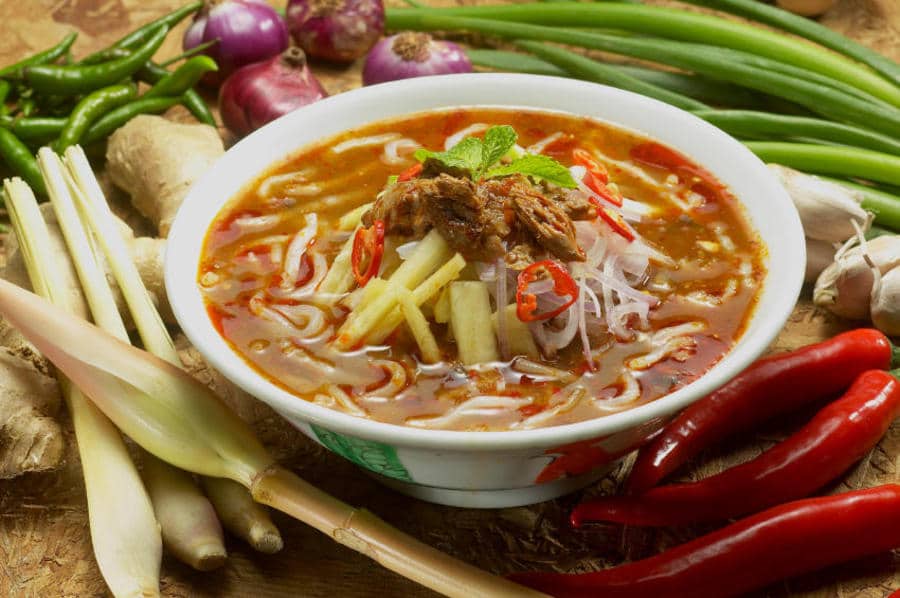 Laksa or the delicious fish noodle soup is a spicy-sour concoction that the locals swear by. The wonderful marriage of textures from the soft noodles, the hot liquid thickened with flaked, usually poached fish and the fresh garnish – mint, cucumber, occasionally pineapple and fresh chilli – all ingredients that are native to the region. Nasi lemak is rice steamed with coconut milk and pandan leaves. It is customarily served with peanuts, sliced cucumber, hard boiled eggs and sambal sauce.
Laksa or the delicious fish noodle soup is a spicy-sour concoction that the locals swear by. The wonderful marriage of textures from the soft noodles, the hot liquid thickened with flaked, usually poached fish and the fresh garnish – mint, cucumber, occasionally pineapple and fresh chilli – all ingredients that are native to the region. Nasi lemak is rice steamed with coconut milk and pandan leaves. It is customarily served with peanuts, sliced cucumber, hard boiled eggs and sambal sauce.
Singapore: Chilli crab + Kaya Toast
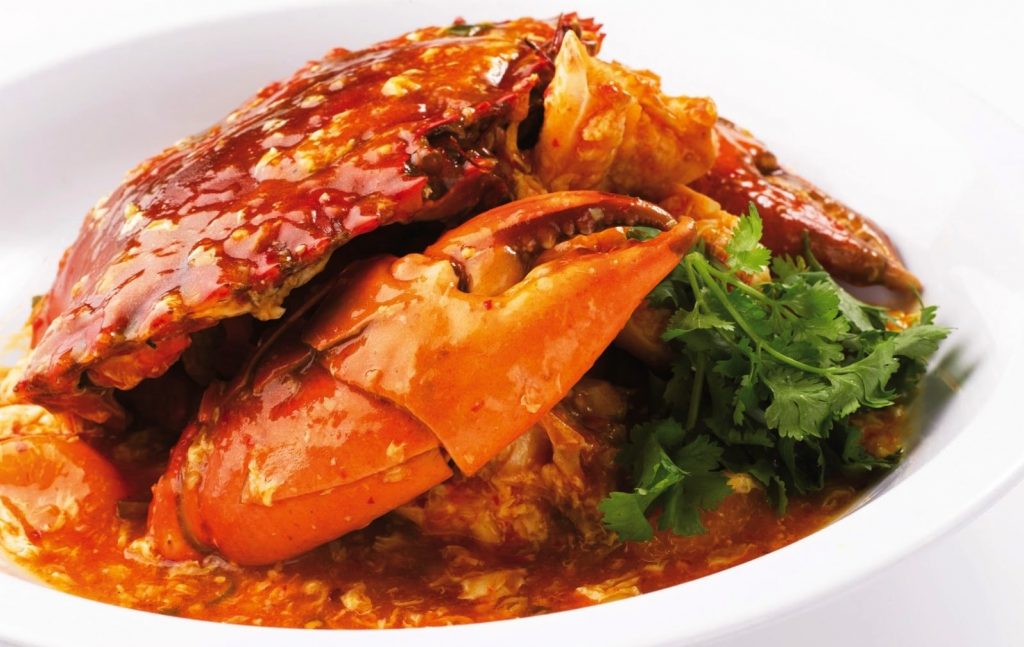 One of Singapore’s signature dishes, chili crab was invented in the 1950s when a Singaporean chef steamed crabs in chili and tomato sauce. Since then it’s become the go-to dish for tourists, but locals flock to it as well. Toasted buns called mantou are often eaten with chili crab to sop up the sweet tomato gravy, although it’s virtually guaranteed that you’ll end up with at least some on your shirt. Another treat from Singapore is their unique twist to a universally favourite breakfast – kaya toast is thinly sliced, crisply toasted bread served with a spread made of eggs, sugar and coconut milk that has been flavoured with pandan leaves.
One of Singapore’s signature dishes, chili crab was invented in the 1950s when a Singaporean chef steamed crabs in chili and tomato sauce. Since then it’s become the go-to dish for tourists, but locals flock to it as well. Toasted buns called mantou are often eaten with chili crab to sop up the sweet tomato gravy, although it’s virtually guaranteed that you’ll end up with at least some on your shirt. Another treat from Singapore is their unique twist to a universally favourite breakfast – kaya toast is thinly sliced, crisply toasted bread served with a spread made of eggs, sugar and coconut milk that has been flavoured with pandan leaves.
Vietnam: Pho + coffee
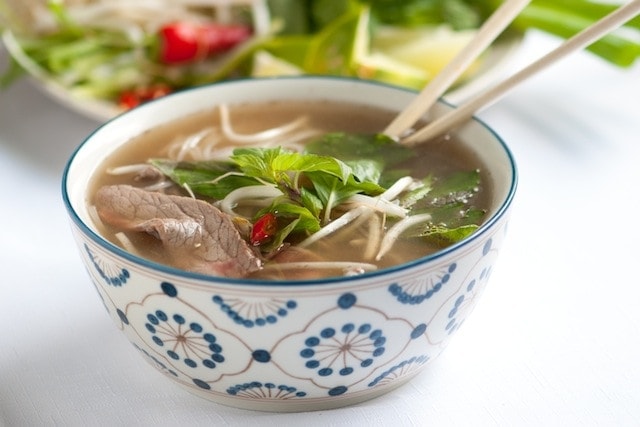 Pho or soup originated in the early 20th century in northern Vietnam, and was popularised throughout the rest of the world by refugees after the Vietnam War. Two variations are most popular: pho ga (with chicken) and pho bo (with beef). Perfect for breakfast, pho is generally had for breakfast. Another breakfast thing exclusive to Vietnam is coffee. Grown in many plantations in the central highlands, Vietnamese coffee is one of the best in the world. It’s strong, sweet and tastes unbelievably good – especially with ice.
Pho or soup originated in the early 20th century in northern Vietnam, and was popularised throughout the rest of the world by refugees after the Vietnam War. Two variations are most popular: pho ga (with chicken) and pho bo (with beef). Perfect for breakfast, pho is generally had for breakfast. Another breakfast thing exclusive to Vietnam is coffee. Grown in many plantations in the central highlands, Vietnamese coffee is one of the best in the world. It’s strong, sweet and tastes unbelievably good – especially with ice.
Thailand: Thai curry + mango and sticky rice
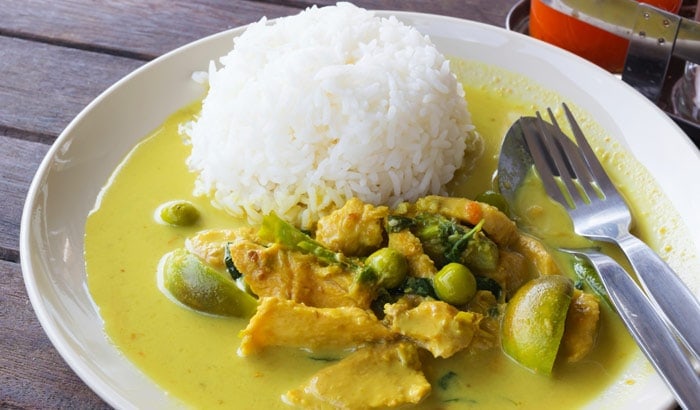 The ubiquitous Thai curry may be an obvious choice, whether it is yellow, green or red. Having a massive coast means that both rice and coconut are native to the region, which has led to this particular dish to be an integral part of Thailand’s cuisine. Another immensely popular dish is a dessert – mango with sticky rice, with a special sweet-sour Thai mango.
The ubiquitous Thai curry may be an obvious choice, whether it is yellow, green or red. Having a massive coast means that both rice and coconut are native to the region, which has led to this particular dish to be an integral part of Thailand’s cuisine. Another immensely popular dish is a dessert – mango with sticky rice, with a special sweet-sour Thai mango.
Laos: Laab/Larb + Kaipen
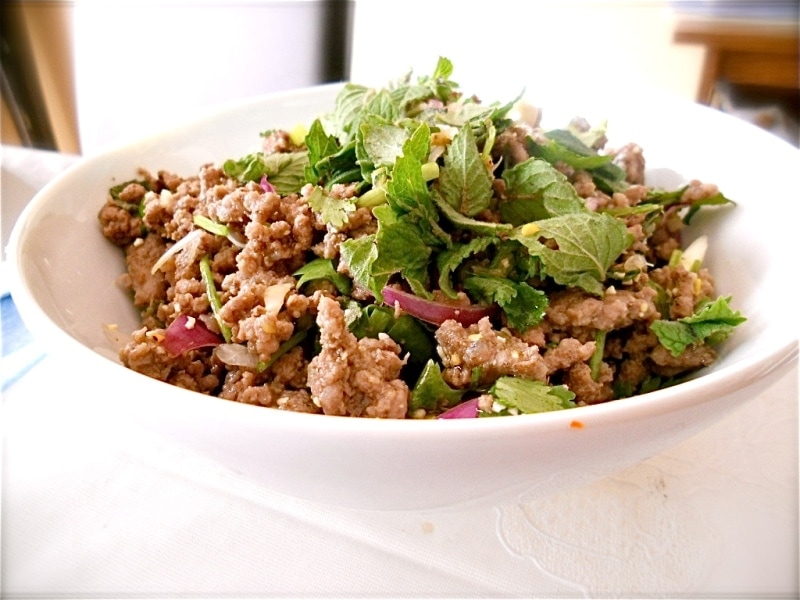
Sometimes “larb,” laab is regarded as the national dish of Laos. Simple but delicious, laab is made of roughly chopped meat blended with toasted rice and fish sauce. No trip to Laos or Northern Thailand is complete without sampling a few different varieties of laab – made from chicken, fish, beef, pork, or even duck. Sticky rice is a huge part of their culture – often the Lao will refer to themselves as “luk khao niaow“, which can be translated as “children or descendants of sticky rice”. Kaipen is a dish made from Mekong River weed that is dried and flattened and may be topped with vegetables, then sprinkled with sesame seeds, and then fried. It’s as thin as rice paper and as crunchy as a light crisp. It’s eaten as a snack on all occasions – from a casual beer with friends to formally toasting at weddings.
Cambodia: Nom banh chok + On som ang
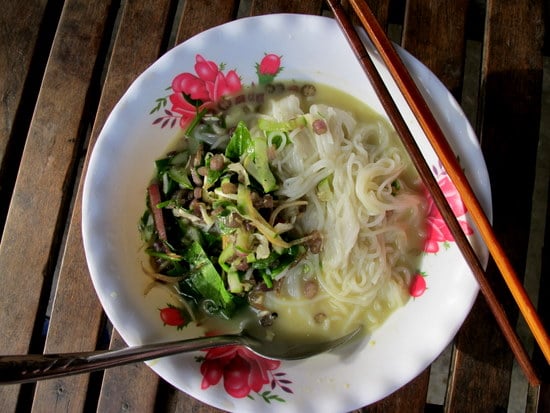
A breakfast food, nom banh chok is usually sold by women carrying the ingredients in baskets hanging from a pole balanced on their shoulders. The noodles are made from fermented rice and topped with aromatic green fish curry. The sight of the women selling this food is as native as it gets. On som ang – grilled roasted bananas – are another simple and delightful street food here. Sweet bananas are encased in sticky rice that has been cooked with coconut milk and palm sugar, then the whole package is roasted inside a banana leaf. The rice caramelises and forms a hard crust while the banana melts inside – a south-east Asian, street-side version of crème brûlée.
Indonesia: Nasi goreng + gado gado + Kopi Luwak
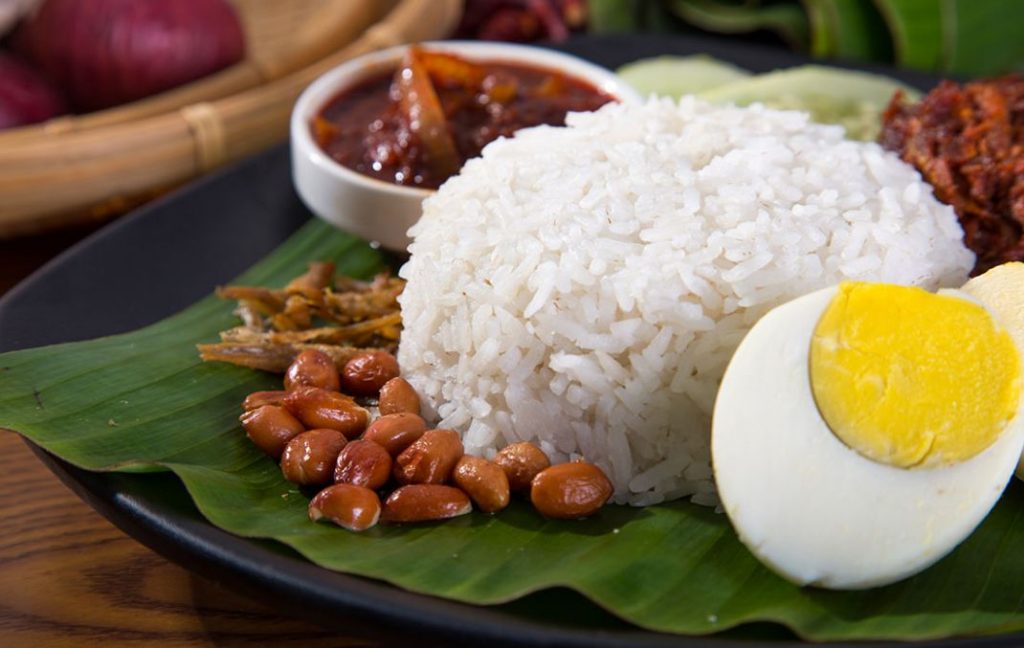 Nasi goreng is traditionally served at home for breakfast and it is traditionally made out of leftover rice from the night before. And as with other fried rice recipes in Asia, it has been suggested that it can trace its origin from Southern Chinese fried rice. A plate of stirred fried rice complemented with eggs, prawns, chicken, salted dried-fish, chilli, and veggies, nasi goreng has gone on to achieve international acclaim. Gado-gado is an Indonesian vegetarian salad made from assorted veggies such as cabbage, spinach, bean sprouts, kangkung, green beans, topped with a peanut sauce dressing. Last but certainly not least, one has to try perhaps the most expensive coffee in the world – Kopi Luwak which refers to the coffee that includes part-digested coffee cherries eaten and defecated by the Asian palm civet. Sound gross but tastes heavenly (if you can find authentic Kopi. Beware of fakes found across SEA)
Nasi goreng is traditionally served at home for breakfast and it is traditionally made out of leftover rice from the night before. And as with other fried rice recipes in Asia, it has been suggested that it can trace its origin from Southern Chinese fried rice. A plate of stirred fried rice complemented with eggs, prawns, chicken, salted dried-fish, chilli, and veggies, nasi goreng has gone on to achieve international acclaim. Gado-gado is an Indonesian vegetarian salad made from assorted veggies such as cabbage, spinach, bean sprouts, kangkung, green beans, topped with a peanut sauce dressing. Last but certainly not least, one has to try perhaps the most expensive coffee in the world – Kopi Luwak which refers to the coffee that includes part-digested coffee cherries eaten and defecated by the Asian palm civet. Sound gross but tastes heavenly (if you can find authentic Kopi. Beware of fakes found across SEA)
Philippines: Lechon +Taho
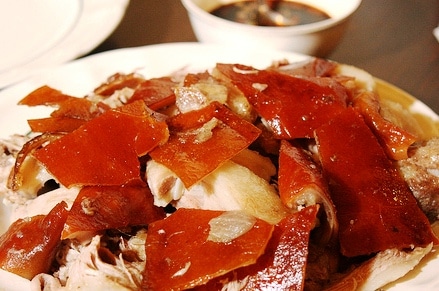 Technically a Spanish preparation, Cebu lechon or the suckling pig is apparently the best lechon in the world. The meat is marinated in soy sauce and traditionally stuffed with lemon grass, onion and other spices for added aroma and taste and is grilled in a coal. A signature sweet of the Philippines, taho is sold every morning by taho vendors, carrying buckets on a pole across their shoulders. It’s a custard-like combination of fresh silken tofu, arnibel made from caramelised brown sugar and vanilla, and sago pearls. Served warm and sweet, it’s a tasty Manila breakfast treat.
Technically a Spanish preparation, Cebu lechon or the suckling pig is apparently the best lechon in the world. The meat is marinated in soy sauce and traditionally stuffed with lemon grass, onion and other spices for added aroma and taste and is grilled in a coal. A signature sweet of the Philippines, taho is sold every morning by taho vendors, carrying buckets on a pole across their shoulders. It’s a custard-like combination of fresh silken tofu, arnibel made from caramelised brown sugar and vanilla, and sago pearls. Served warm and sweet, it’s a tasty Manila breakfast treat.
While there are many staples that remain common across South East Asia, like sticky rice and the use of a lot of veggies and fruits in their food, what makes this region so special is that each country adds a different spin to them and it has gone on to become an integral part of their cultures.
Was that Yum! Then look out for more such blogs here as we cover more countries and regions in our Bragpacker Food Series.
Bon Appetit!


